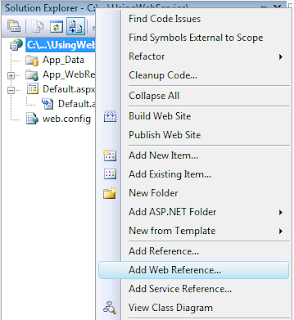Some of the questions that always need to know a c# learner before going for the programming in C#. So from today I will write only about c# basics and ahead I will try to bring good articles for the beginners so keep visiting...
let’s start now ......
1. What is .NET?
It is a
platform or technology from Microsoft based on .NET Framework
2. How languages differ
from technology?
In a
language things get created from scratch while in a technology things are already
available but need to assembled.
What is a framework?
- A software that provides a set of libraries, a
set of tools and some rules
- Examples
o MVC (Model-View-Controller) framework
o Struts
o Hibernate
o spring
o .NET Framework
o Mono Framework
What are different
frameworks for .NET Technology?
- There are two frameworks available for .NET
technology
o .NET Framework from Microsoft
§ Proprietary
§ Works with Windows Only
§ Supports all possible language under .NET
o Mono Framework from Novell
§ Open Source
§ Works with all operating systems
§ Supports few languages like C# and Ruby
Is C# Platform
Independent?
- No
- Since Mono which runs C# on all platform is not
from Microsoft
Why .NET?
- Actually .Net provide cross-Language
interoperability among many languages of choice
o C#
o VB
o J#
o C++
o F#
o Pythen.NET
o Ruby.NET
o Pascal.NET
o COBOL.Net
o Etc.
- All languages get compiled into a common format
called as MSIL (Microsoft Intermediate Language)
- Only on software is enough to run application
written in any .NET based language called as CLR (Common Language Runtime)
- To make the interoperable programs they must
follow CLS (Common Language Specifications) compliancy rules
- All language share the common libraries and
tools provided by special software called .NET Framework
o .NET Framework software provides different
versions of libraries
§ 1.0
§ 1.1
§ 2.0
§ 3.0
§ 3.5
§ 4.0
- All languages share the Common Type System
(CTS). It is set of classes and structures that get mapped by different
language based on their size
o System.Byte
o System.Int16
o System.Int32 à C# (int), VB (Integer)
o System.Int64
o System.Single à C# (float), VB(Single)
o System.Double
o System.Boolean
o System.String
o System.Object
- Single IDE called Visual Studio for any kind of
development using any language of choice
o Versions of Visual Studio
§ 2001
§ 2003
§ 2005
§ 2008
§ 2010
- Any kind of development using language of choice
o Console Application
o Window Based
o Web Base
o Mobile Applications
o Window Service
o Web Service
- Integration other third party technologies
o AJAX
o Web Service
o Web 2.0
- No more “DLL Hell”
- All .NET language is Object Oriented
What is the location of
frameworks?
C:\Windows\Microsoft.NET\Framework
C# as Programming
Language
- A programming language based on .NET Framework
based on C and C++, with the power of Java and simplicity of Visual Basic
- It is an object Oriented Language
- Every program should have a class
- Every executable program (.exe) must have
an entry point
o public static void Main()
o public static int Main()
o public static void Main(string []args)
o public static int Main(string []args)
- File must be saved as .cs
Syntactical Rules of C#
- All keywords must be lower case
- All other items should start with capital letter
o It is called as Pascal case
Hierarchy in .NET
Assembly or Dynamic Link
Library (DLL) à Namespaces à Classes/Structures àField/Method etc.
Example
MSCorlib.dll à System namespace à Console class à Write(),WriteLine()
Test Case
Writing First C#
(C-Sharp) Program
Class First
{
public static void Main()
{
System.Console.WriteLine("Hello to C#");
}
}
Compile the program
- Use compiler as CSC.EXE
o CSC <programname>
CSC First.cs à First.exe
Running an executable
file
First
Note: If CSC is not
working then set the PATH
Look for your framework
folder, copy the path, now the set path using DOS
SET PATH=%PATH%;
C:\WINDOWS\Microsoft.NET\Framework\v3.5
Setting Path using My
Computer à Properties à Advanced à Environmental Variables à System Variables à Path à Edit à Add your path after a semicolon
View contents of an MSIL
file
Use ILDASM (Intermediate Language De-Assembler) tool to view contents of an
MSIL file
ILDASM <filename>
Example
ILDASM First.exe
How C# programs execute
.cs à CSC à .exeà CLR à Code Verifier à Just-in-time (JIT) compiler à Native code à Execution
Importing the Namespaces
- Use using keyword
using <namespacename>;
Example
using System;
class First
{
public static void Main()
{
Console.WriteLine("Hello to Using");
}
Creating Aliases to
namespace and classes
- Use the using keyword again
using <aliasname>=<namespace or
class>;
Example
//Creating an alias
using c=System.Console;
class First
{
public static void Main()
{
c.WriteLine("Hello to Alias");
}
}
Using Visual Studio.NET
IDE as RAD (Rapid Application Development) tool
- Start the Visual Studio.NET 2008
- Create a new project using Visual C# as language and Console Application as Template
- Select the location and Type the Project Name as Sample
- Use Ctrl+F5 to run the programs






